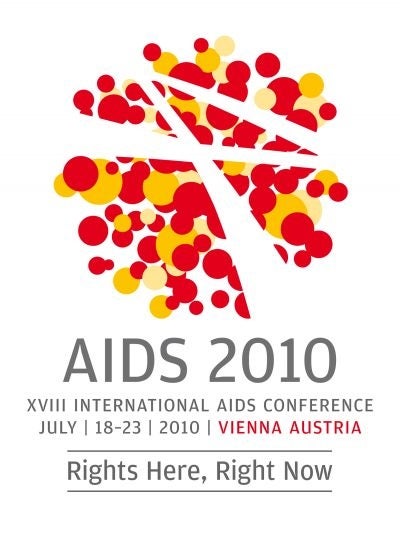Following is a factfile on an anti-HIV vaginal gel whose test results, unveiled at the International AIDS Conference in Vienna, have sparked the biggest excitement in years in the war on AIDS:
WHAT IS IT?
A microbicide cream inserted in the vagina which aims to shield a woman against HIV in semen. Volunteers in South Africa who used the formula over 30 months had a 39-percent lower risk overall of HIV infection compared with counterparts who used a dummy lookalike gel.
WHY ALL THE FUSS?
After two decades' effort, this the first proof that a microbicide can offer significant protection against the human immunodeficiency virus (HIV). Some veterans compare the news to the advent in 1996 of the anti-HIV drug "cocktail" and the 2006 discovery that circumcision more than halves the infection risk for men.
WHY WOULD IT HELP?
A microbicide would join condoms and circumcision in the arsenal for preventing the spread of HIV. Each year, some 2.7 million people become infected with HIV. Treatment, a lifelong affair in the absence of a cure, is now a huge and possibly unsustainable financial burden. Microbicides would especially help women in sub-Saharan Africa, exposed to coercive sex with an infected partner who refuses to wear a condom.
IS THE MICROBICIDE AVAILABLE?
No. The results are only for a second stage in a long, three-phase process in which new drugs are vetted for safety and efficacy. Third phases typically take two or three years. Health watchdogs then pore over the data before deciding whether to licence a product. The gel, if approved, could cost around 20 US cents per application, according to some estimates.
WHAT'S IN THE GEL?
It contains a one-percent concentration of tenofovir, a frontline drug in the combination therapy to treat people already infected with HIV. Antiretrovirals work by preventing HIV from reproducing in CD4 immune cells. Previously tested gels, which have not used antiretrovirals, have had negligible protection or even boosted the risk of infection.
IS THE GEL A GOOD ENOUGH SHIELD?
Protection of 39 percent may not be high enough for watchdogs in rich countries, where 80 percent is a likelier benchmark. But, coupled to other prevention measures, it could be acceptable in countries in sub-Sahara Africa where two-thirds of infections occur. In South Africa alone, a gel with such effectiveness would save 1.3 million new infections and avert 800,000 deaths over 20 years, the researchers say.
WHO TESTED THE GEL?
The Centre for the AIDS Programme of Research in South Africa, or CAPRISA. The trial, called CAPRISA 004, was tested among 889 sexually active, HIV-uninfected women living in urban and rural settings. The investigation was framed by tough ethical guidelines, in which the women were regularly advised on the risks, counselled on safe sex and given access to condoms.
WHAT HAPPENED IN THE TRIAL?
Half the volunteers were given the gel and the other the placebo. They were told to use the product within 12 hours before sex, and as soon as possible afterwards, but also within 12 hours. Each month, they were monitored for HIV infection, quizzed about their sexual activity and given more counselling. Women who became infected or pregnant were withdrawn from the trial. In the placebo group, 60 became infected, while the tally in the gel group was 38.
WHAT ABOUT SIDE EFFECTS?
The gel was found to be safe, which historically has been a big worry in microbicide research. Also, there was no sign that a woman who became infected after using the gel was resistant to tenofovir. This too is a relief, given concerns that on-again, off-again use could help HIV become immune to this important drug.
WHY ARE EXPERTS CAUTIOUS?
While hailing the Phase IIb results, specialists are awaiting the outcome of the third phase before popping the champagne. Among the questions is how the gel was used. Women who used it most consistently had a protection of 54 percent; those who used it least consistently, just 28 percent. Effectiveness fell markedly over the course of trial, possibly because use of the microbicide declined among some women.
WHAT ABOUT THE FUTURE?
If the CAPRISA 004 data are confirmed, this could be just the start of an extraordinary tale for microbicides. Scientists will want to see whether different antiretrovirals or ways of using the gel - perhaps through a slow-release vaginal ring - could boost protection. Many are inspired by the slow start but ultimately glittering success of HIV drugs, now a lifeline for 5.2 million people. Another avenue of exploration is whether the microbicide is effective in anal intercourse, where the statistical risk of infection is 10 times higher than in vaginal sex.
Sources: CAPRISA IIb data, published in US journal science; CAPRISA researchers; interviews and conferences with non-CAPRISA specialists at 18th International AIDS Conference.
ri/lt
Subscribe to Independent Premium to bookmark this article
Want to bookmark your favourite articles and stories to read or reference later? Start your Independent Premium subscription today.


Join our commenting forum
Join thought-provoking conversations, follow other Independent readers and see their replies